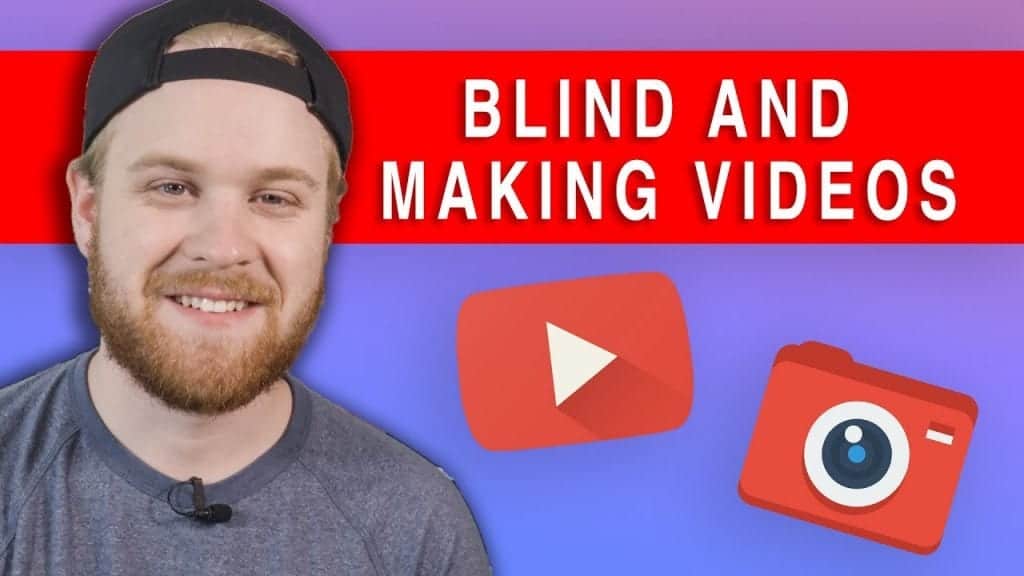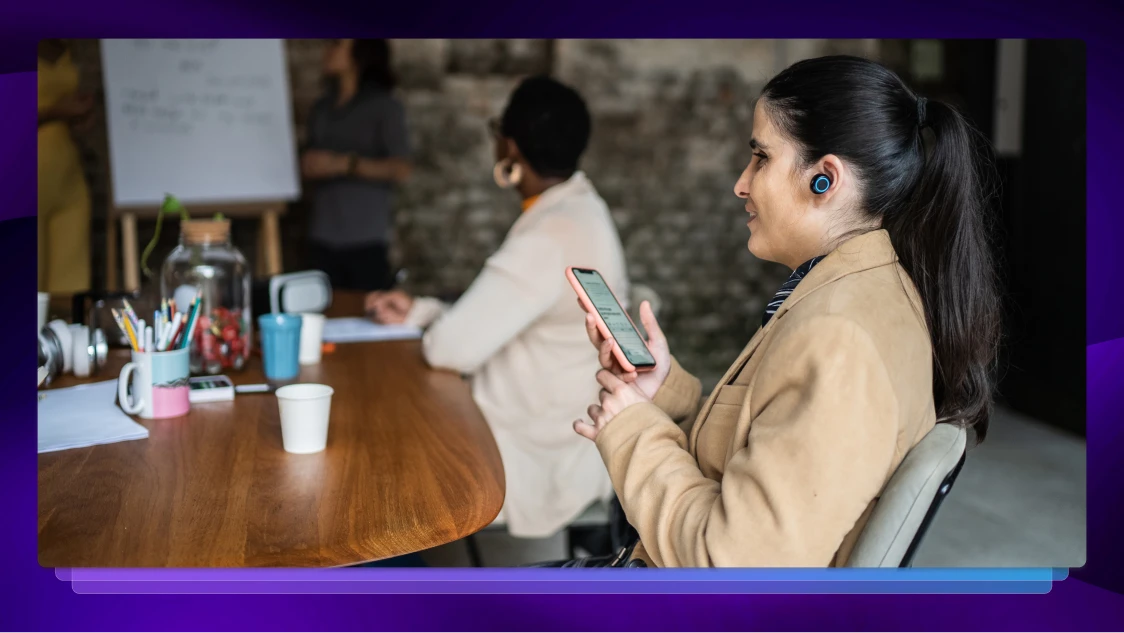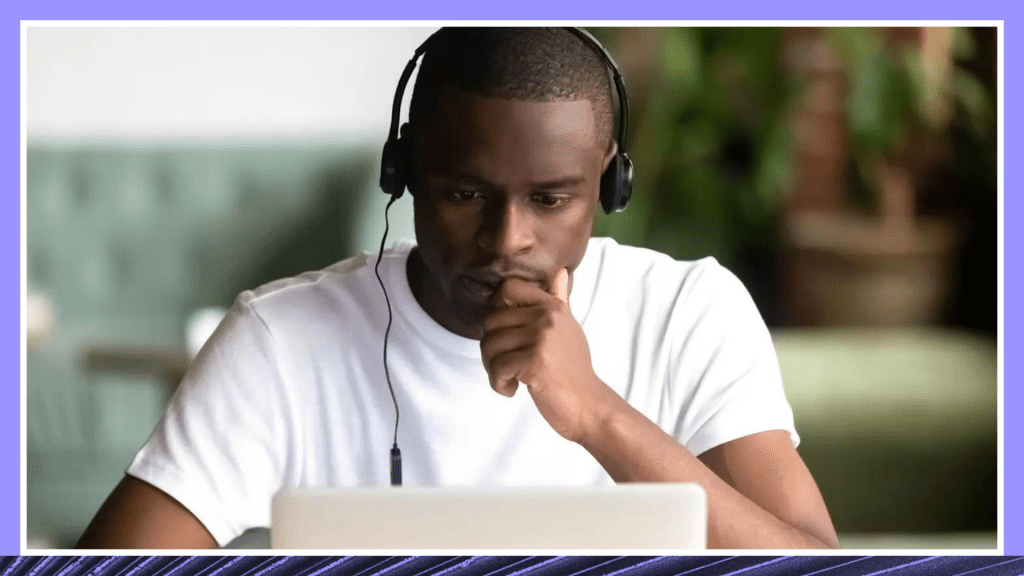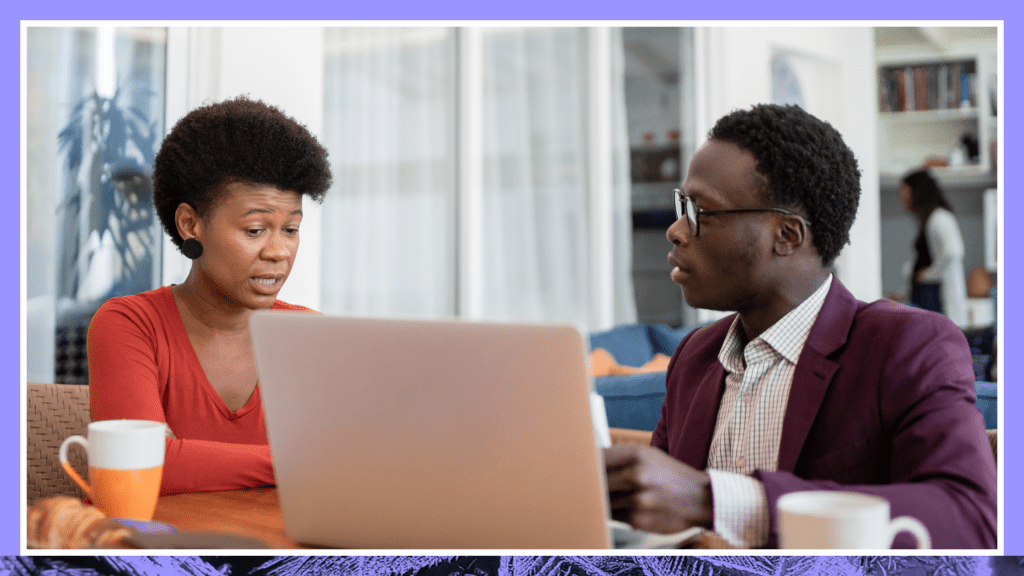How A Blind Person Makes A YouTube Video
Learn how a blind person makes a YouTube video straight from the source, James Rath.

Hey, James Rath here. So I've been asked multiple times, what is my process at making YouTube videos as a blind person? I also have a lot of audience members who are sighted and who are visually impaired who want to learn how to start sharing their messages.
James was born with a condition called Ocular Albinism. This condition causes lack of pigment in the retina of the eye, which drastically reduces the definition he can see. It also causes nystagmus, which induces the eyes to dance, causing vertigo. To top it all off, his eyes are extremely sensitive to light.
Rath took to filmmaking as a way to enhance his vision. Through the use of lenses and monitors, James is able to see the world and take control of his lived experience. Viewing the world through the lens of the camera evolved from simply a tool, to a passion, and James has turned filmmaking into his career.
So how does someone that is blind produce YouTube videos? Check out the video below to learn about James’ process including:
- Content ideation
- Storytelling
- Collaboration
- Editing
- Accessibility
- Publishing
Video Transcript
This is my process on how to make a YouTube video. It’s so easy even a blind man can do it.
Hey, James Rath here. So I’ve been asked multiple times, what is my process at making YouTube videos? I also have a lot of audience members who are sighted and who are visually impaired who want to learn how to start sharing their messages.
I just want to give a quick thanks to Rev for sponsoring this video. They are the wonderful folks who closed caption all of my videos, and we’ll talk more about that later.
Content Ideation
So people ask me often, where do I come up with my ideas for videos, and honestly, it’s many different sources. It could be anywhere from just seeing something on TV or around in my day-to-day life, and I want to sort of spin it into a video. I also want to touch on this, because a lot of people think that doing a video similar to someone else is straight up plagiarism. It can be if it’s literally copied and pasted just from your voice, but there are ways to be inspired by other people’s videos and then take that and spin it as your own experiences.
For instance, former YouTuber Tommy Edison has made a video in the past, two I believe actually, about how blind people dream or what they dream. And I did a similar video, but it’s also different because he and I have different kinds of blindness. So my dreaming is very different from his, so his isn’t really a representation of everyone who’s blind, and mine isn’t a representation of everyone who’s blind as well.
Another place where I look for influence on video ideas is actually you. I ask oftentimes in my community section, and I’ll find ways to incorporate that with the videos that are currently in the pipeline or the format that I’m doing right now. And those are just some things to think about for where to get ideas or inspiration for videos.
Storytelling
So you’ve got your idea, and now you want to film it. Great, but how are you going to tell this story or this experience or this information? Are you going to tackle it more in the eye of a filmmaker and maybe do it in a more stylistic way, or do you want to just sit down, have a nice sort of appealing set and view and just share that?
There’s nothing wrong with either approach and they can both be engaging and intimate depending on what you decide to do. I consider myself a filmmaker so there are different ways for me to tell different stories and relay different information. For instance, when I want to show you what I can and can’t see, I made a whole video about what I can and can’t see with actual video referencing my vision. That was told in a more stylistic way, whereas this is me talking to you, and you get some reference points, and it’s cool. We get to have sort of a conversation, and we can continue that conversation in the comments down below.
Collaboration
The third piece I want to bring up is collaboration, and I don’t mean this necessarily in collaboration with other YouTubers or other creators. I mean this in collaboration behind the scenes. People to help you as you host and direct this video. Maybe you have someone else who’s directing the video for you, and you’re just simply hosting and producing. Either way, it doesn’t hurt to have someone else be hands on with your video, especially those who are skillful and knowledgeable. I have Elijah here, for instance.
So for me, with my legal blindness I have photophobia, and that comes with the albinism. So lights are overexposing, and lights basically just blind out different colors. So it’s helpful to have someone else be the eye for color on my set or on my shoot. And don’t feel like you need to have all the biggest equipment in the world. It doesn’t necessarily matter when you’re getting started. You can create a great piece of content with the minimum of just a phone and natural lighting.
Editing
And now onto editing. This is either people’s favorite or least favorite part about making content, but this is where the magic happens. This is where you get to see your piece of content finally come to your realization, your vision. And maybe not everyone’s able to make that vision possible perfectly, but you can definitely get started, and I recommend practicing editing. I edited my own content from a VCR to Windows Movie Maker to iMovie to now Final Cut Pro.
If you’re shooting on a mobile device like an iPhone, an iPad, or an Android phone, you can download editors. I know with the App Store there’s iMovie, and then with the iPad’s App Store ,there’s Pinnacle Studio and Pinnacle Studio Pro. For Android, sorry, I don’t really have any recommendations for editors because I don’t use Android. If you do, leave a comment down below and maybe help someone who might only have Android.
After some time practicing with editing, maybe it’s just not for you, maybe hire an editor. Editors do great work and they are worth your dime if that’s the route you need to go. But please don’t pay them a dime, because they’re worth much more than that.
So I edited my videos for a long time, but it was my decision to bring on an editor because of my schedule and conflicts with making videos throughout the week. And frankly, having an editor is nothing to be ashamed of. It really just helps you make your content and focus on the direction of it, and the editor helps make that magic happen.
Accessibility
So you finish editing your video, and it’s ready to be published. Not quite. Personally, I don’t consider a video to be done unless it is accessible. And that means it’s descriptive and also closed captioned. And this is where my sponsor Rev comes in. They are a service I’ve been using for several years now to closed caption all of my videos.
Remember that YouTube is a global platform, so you could be getting viewers from India, the UK, Australia, from other parts of the world maybe in non-English speaking countries. By providing transcriptions and closed captions, it can help those non-English speakers follow along with your videos and get the gist of it.
By closed captioning, your videos will actually be pushed within the algorithm for search results and discoverability. For viewers who are deaf or hard of hearing, it’s a great way for them to follow along. For those who just have a visual impairment and can still see a little bit, you can actually adjust the closed captions on the YouTube player to be accessible. Personally, I have my closed captions turned on at 300 to 400% font. I think YouTube probably has the best closed captioning feature of any video player, honestly, that’s out there. Correct me if I’m wrong.
But how does a totally blind person benefit from closed captions? With a refreshable braille display, they’ll be able to feel your video. Kind of weird, but cool when you think about it. A deaf-blind influencer I know who definitely benefits from this is Haben Girma. She graduated from Harvard. She was the first deaf-blind woman to do so and she did all of her work using a refreshable braille display. And if having your educational videos or just your dialogue be accessible to people who are deaf-blind, just by having the closed captions available and the transcripts so that they can follow along via braille, just think about how cool that is.
The great thing about rev.com is that these are real people who’ve gone through training to closed caption your videos. They’re right with 99% accuracy compared to, well, YouTube’s automated captions as Rikki Poynter says. 90% of Rev’s freelancers are based in the U.S., Canada, and the remainder being in other English-speaking countries.
It’s easy to integrate your YouTube channel with Rev so that they can closed caption your new uploads right away. If your video is under an hour, you’ll have a 24-hour turnaround time with your closed captions. Honestly the best part about Rev is the price. It’s only $1.99 a minute.
Try it out, try it out, honestly, it’s a great service. I use them all the time. I’m using them for this video. I’m using them for the next video, and following videos. I’m a big fan, and I’m happy to work with them.
Thank you once again for checking out this video, and I hope that you start making videos. Once you do, you know what, self-promote down in the comments. I wanna check ’em out. I’m sure other people wanna check ’em out. We got a community down there, so let me know what kinda content you’re making down in the comments down below. And if you like this video give it a thumbs-up and I will hear you next time.
Learn More About Rev's Services
More About James
James has made quite a name for himself on YouTube, and as a public speaker and accessibility advocate. James’ films have been covered by CNN, Huffington Post, and numerous outlets. They’ve also been admired and shared by Apple’s CEO, Tim Cook. Rath sat down with Cook for an interview on his channel discussing the importance of accessibility in products. He’s spoken at Apple’s campus, VidCon, Playlist Live, and the American Nystagmus Network conference on the topics of digital video, accessibility, and disability. James is also the co-creator of the new show BLIND ABROAD, a travel show focused on accessibility. Be sure to check out James’ YouTube channel to learn more.















